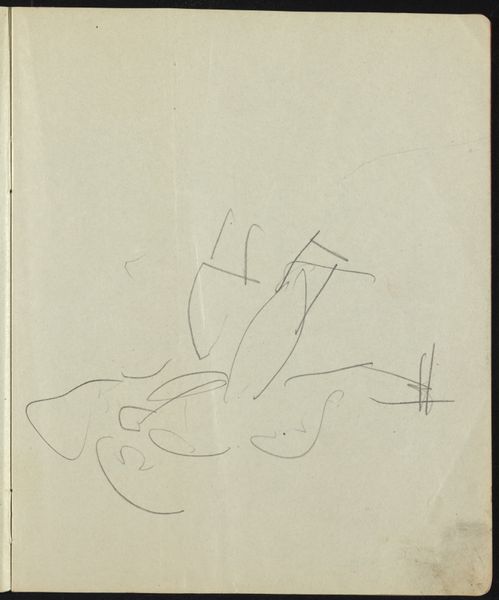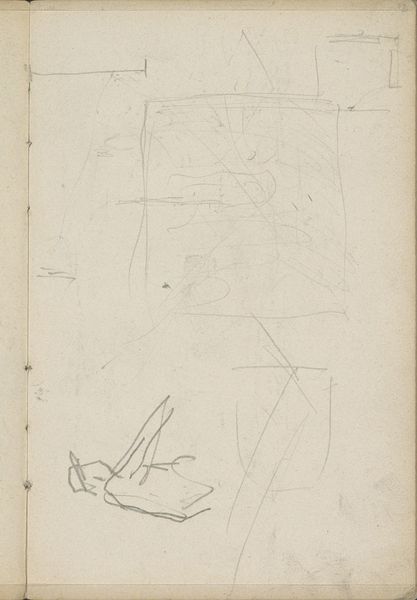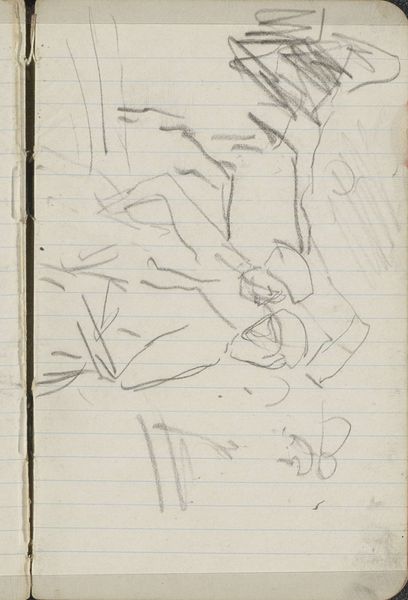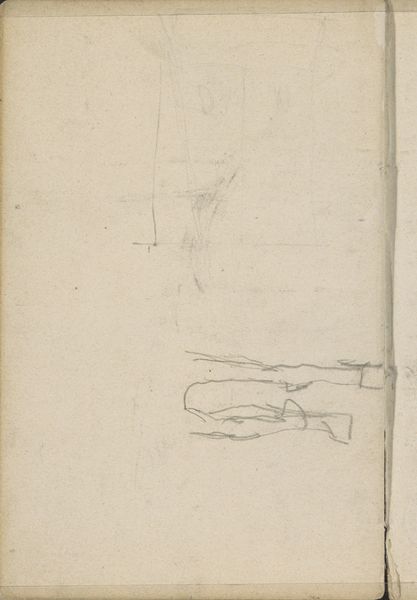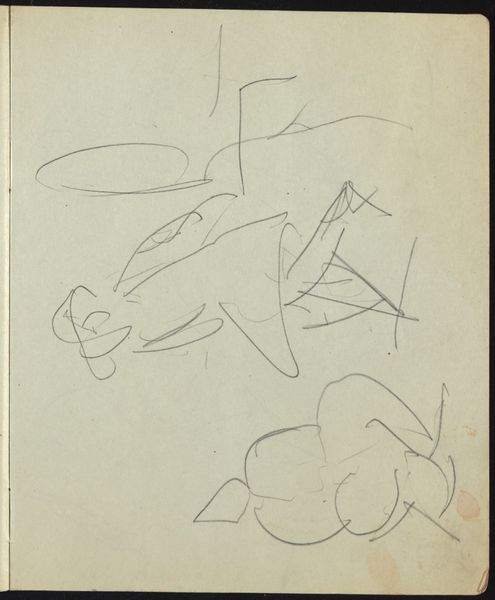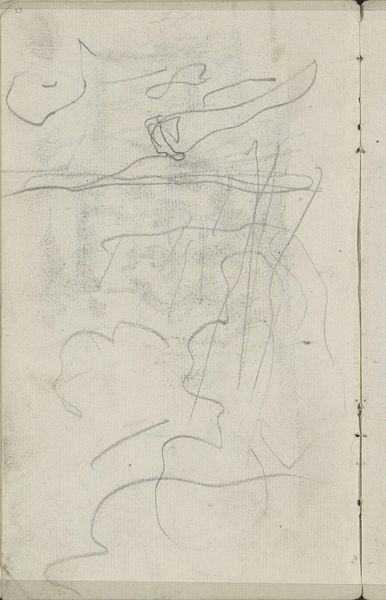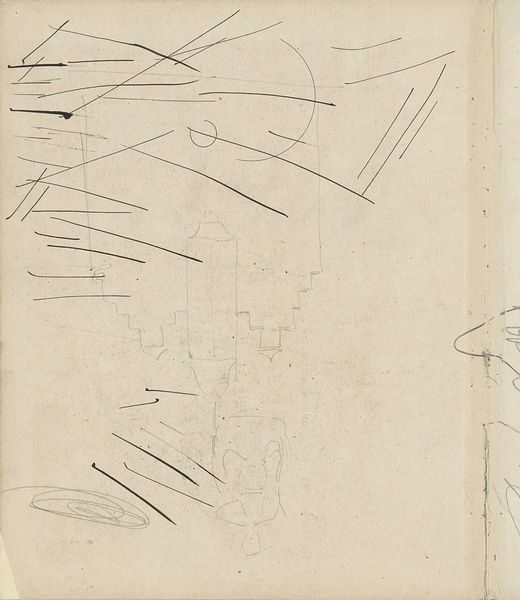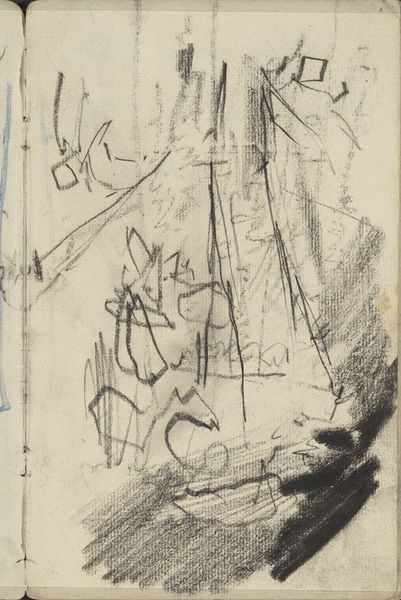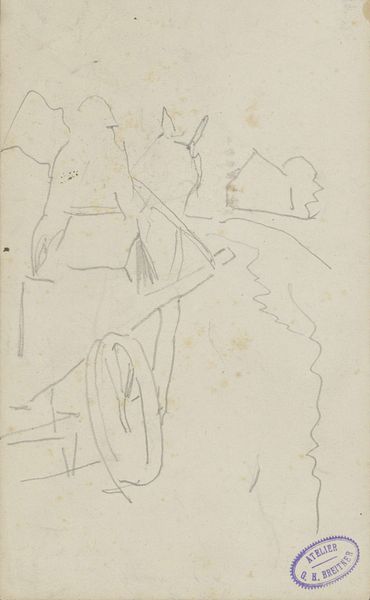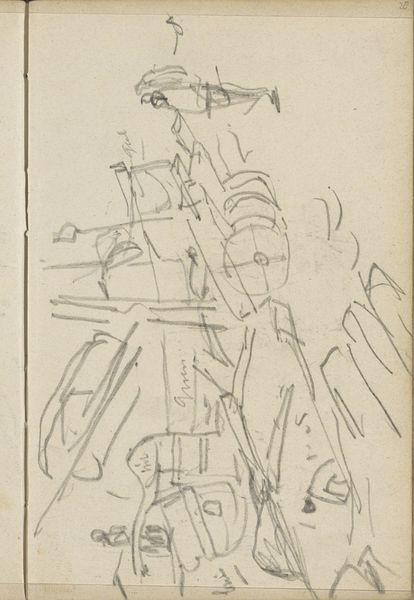![mehrfigurige Skizze (Group) [p. 35] by Max Beckmann](/_next/image?url=https%3A%2F%2Fd2w8kbdekdi1gv.cloudfront.net%2FeyJidWNrZXQiOiAiYXJ0ZXJhLWltYWdlcy1idWNrZXQiLCAia2V5IjogImFydHdvcmtzLzExMTZjM2JhLWEwNWQtNGZmMC1hYjdkLTliN2I3MmY0OTI0Yi8xMTE2YzNiYS1hMDVkLTRmZjAtYWI3ZC05YjdiNzJmNDkyNGJfZnVsbC5qcGciLCAiZWRpdHMiOiB7InJlc2l6ZSI6IHsid2lkdGgiOiAxOTIwLCAiaGVpZ2h0IjogMTkyMCwgImZpdCI6ICJpbnNpZGUifX19&w=1080&q=75)
Copyright: National Gallery of Art: CC0 1.0
Editor: Here we have Max Beckmann’s "mehrfigurige Skizze (Group) [p. 35]" a drawing made sometime between 1944 and 1949. It’s a whirlwind of lines, hinting at figures but never quite resolving. What social and cultural context was Beckmann working in that might shed light on this sketch? Curator: Given the date range, it’s important to remember that Beckmann created this work in the shadow of World War II, even living in Amsterdam in exile during the period. The fractured forms and sense of unease speak to the pervasive anxiety of the time. How might the sociopolitical landscape have shaped Beckmann’s artistic choices, specifically regarding the figuration versus abstraction apparent in this work? Editor: I see that tension you describe. He seems to be intentionally obscuring the figures. Was this a common artistic response to such widespread trauma? Curator: Absolutely. Many artists moved away from straightforward representation. Abstraction and distortion became tools to express the psychological impact of the war. It challenges the viewer to confront the ambiguity and fragmentation of experience. Also, think about the role of sketchbooks in wartime – as a private space for working out ideas, recording observations, and perhaps even resistance. What might the choice of a sketchbook suggest about the accessibility, and therefore the social reach, of these kinds of expressions? Editor: So it was perhaps safer, or more personal, to explore these anxieties in a more private, less resolved format? This makes me see the work as a glimpse into the artist's raw, unfiltered emotional response. Curator: Precisely. It's a powerful testament to the artist's internal struggle mirrored within the world around him. Editor: This has given me a deeper appreciation for the historical and cultural forces shaping this work. It is not just abstract, but rather a reflection of very real anxieties. Curator: Understanding that relationship—the push and pull between individual expression and broader social currents—that's key to engaging with art history meaningfully.
Comments
No comments
Be the first to comment and join the conversation on the ultimate creative platform.
